
Carter-Weygandt Property
5415 Detroit Avenue Urban Renewal Parcel 19-1 & 2 Block 44, Lots 1,12,13,14, 15 Carter-Weygandt Engineering inc

5415 Detroit Avenue Urban Renewal Parcel 19-1 & 2 Block 44, Lots 1,12,13,14, 15 Carter-Weygandt Engineering inc
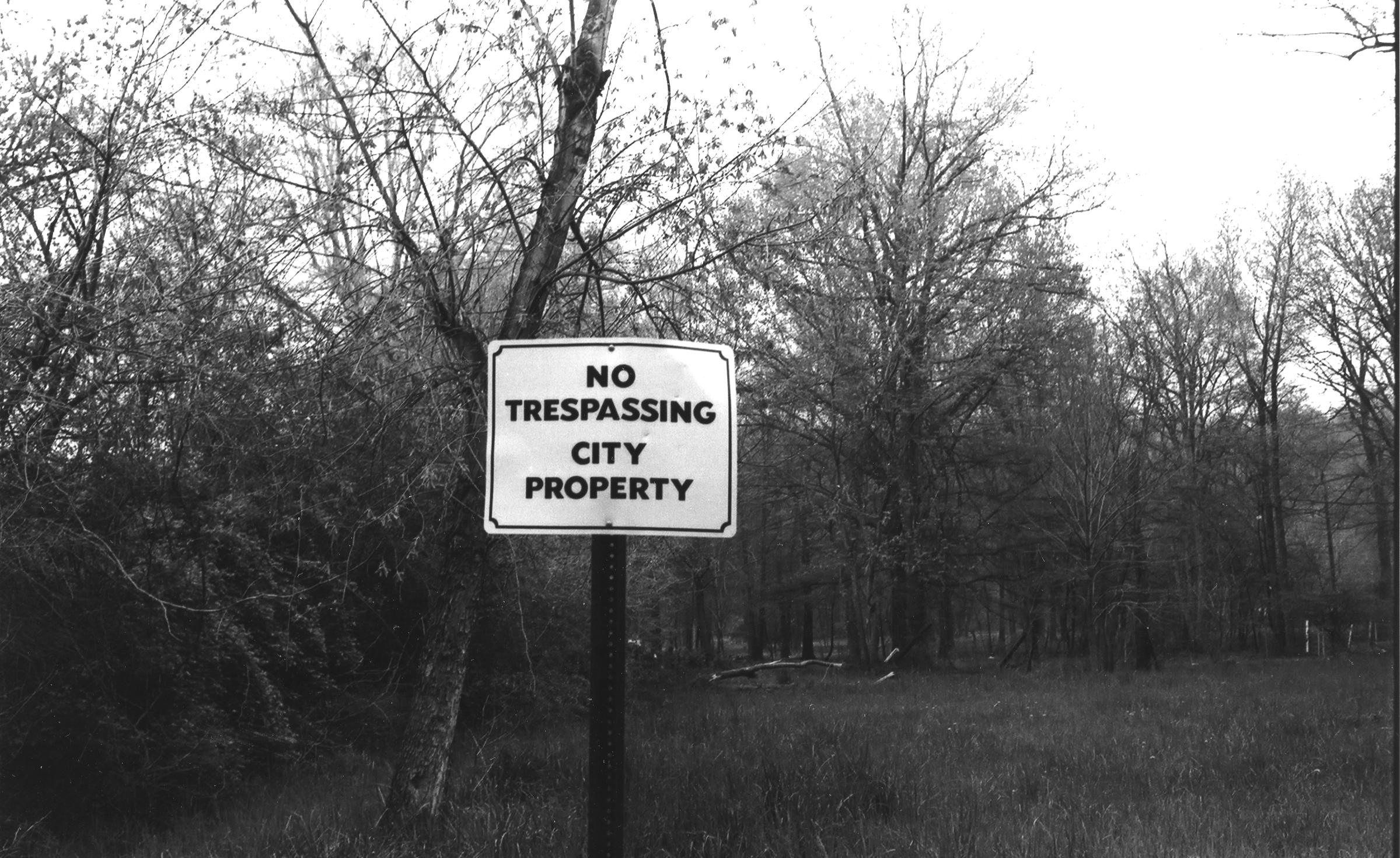
Put up after homes purchased by Urban Renewal Authority in eastern section of Lakeland

Lakeland Road
Oral History of Mrs. Diane Weems Ligon, completed at her home on April 23, 2011. Mrs. Ligon discusses her family's connection to Lakeland, as one of the founding families. She describes how her grandparents and parents met and what they did for a living. Her parents were both civil servants, her father working in the District of Columbia, and her mother at Fort Meade in Columbia, MD. She discusses her siblings, a brother and sister, and her own experience being born and growing up in Lakeland. She describes the different schools she attended, Lakeland Elementary, Fairmount Heights High School, Howard University, and New York University. Ms. Ligon attended segregated schools throughout her education, until she reached graduate school at NYU. She discusses the effects of attending segregated schools, including the lack of material resources for African-American schools, the exceptional quality of teachers in those schools, favorite teachers, and after school activities. She also speaks about Prince George's County's resistance to integration, and the effects segregation had on her life as she experienced it both in the county, in the District of Columbia, and through discussions with her parents in her home. She explains the unity of the community of Lakeland with the surrounding African American communities and how Lakeland was the choice location for the high school because of its position in the middle of the Route 1 corridor. Mrs. Ligon discusses a trip she took after sophomore year in college to India, which was the first time she lived with people who practiced religions other than Christianity, which was an eye opening experience. She later explains how the trip to India helped her transition to graduate school, where again, she was living with people from different cultures and religions. Until graduate school she attended mainly all African-American institutions, and outside of the trip to India, had never lived outside of Lakeland. She describes leaving graduate school early to pursue a career in social work, a career choice she attributes to her rearing in Lakeland. She remained in New York City for fifteen years before returning to Lakeland with her daughter. Upon returning to Lakeland she worked for the District of Columbia government, and then for the Prince George's County Health Department, where she currently still works part-time after coming out of retirement. She describes the difference in her education and the education of her daughter in Prince George's County in the 1980s, not only the different between segregation and integration, but the quality of the education her daughter received. She also describes the Urban Renewal project in the community, and her perspective as someone who was not in the community when the redevelopment happened and as someone whose family was not displaced. She said the redevelopment had both good and negative impacts on the community, and how though her family wasn't negatively impacted, she understand why some families were and are so upset about the project. She briefly discusses the impact of having the University of Maryland as a neighbor to the community. She explains it was a place for employment, but it was also a constant reminder during segregation of where African Americans couldn't attend. Throughout the interview Mrs. Ligon discusses the small community experience for African Americans, their sense of place, self, and rootedness. She explains that Lakeland's story is part of a larger narrative for African American history, and that the history of Lakeland is probably similar to many of these small communities. She also disputes the idea of education as a way out explaining that education was not necessarily a way out, but a way for people to achieve more, and have more opportunities for work.
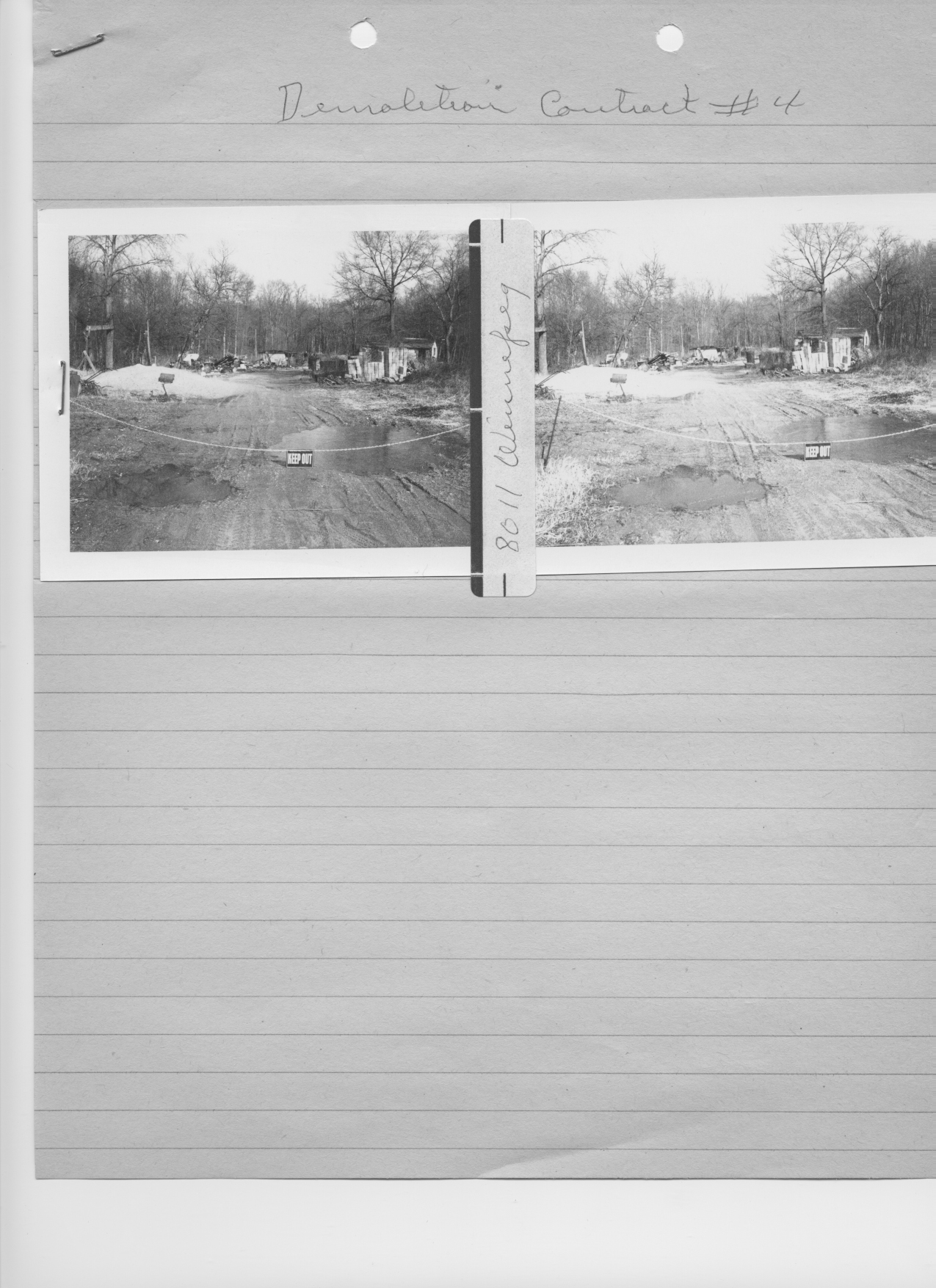
8011 Winnipeg Avenue

Letter with proposals about the use of 5400 Detroit Avenue

4903 Navahoe Street East part of Lot 3 Block 12 Urban Renewal Lot 3 Block 24 Mary E. Stewart 1/3, Sam R. Stewart 1/3; Earl Conway 1/6, Raymond Conway 1/6
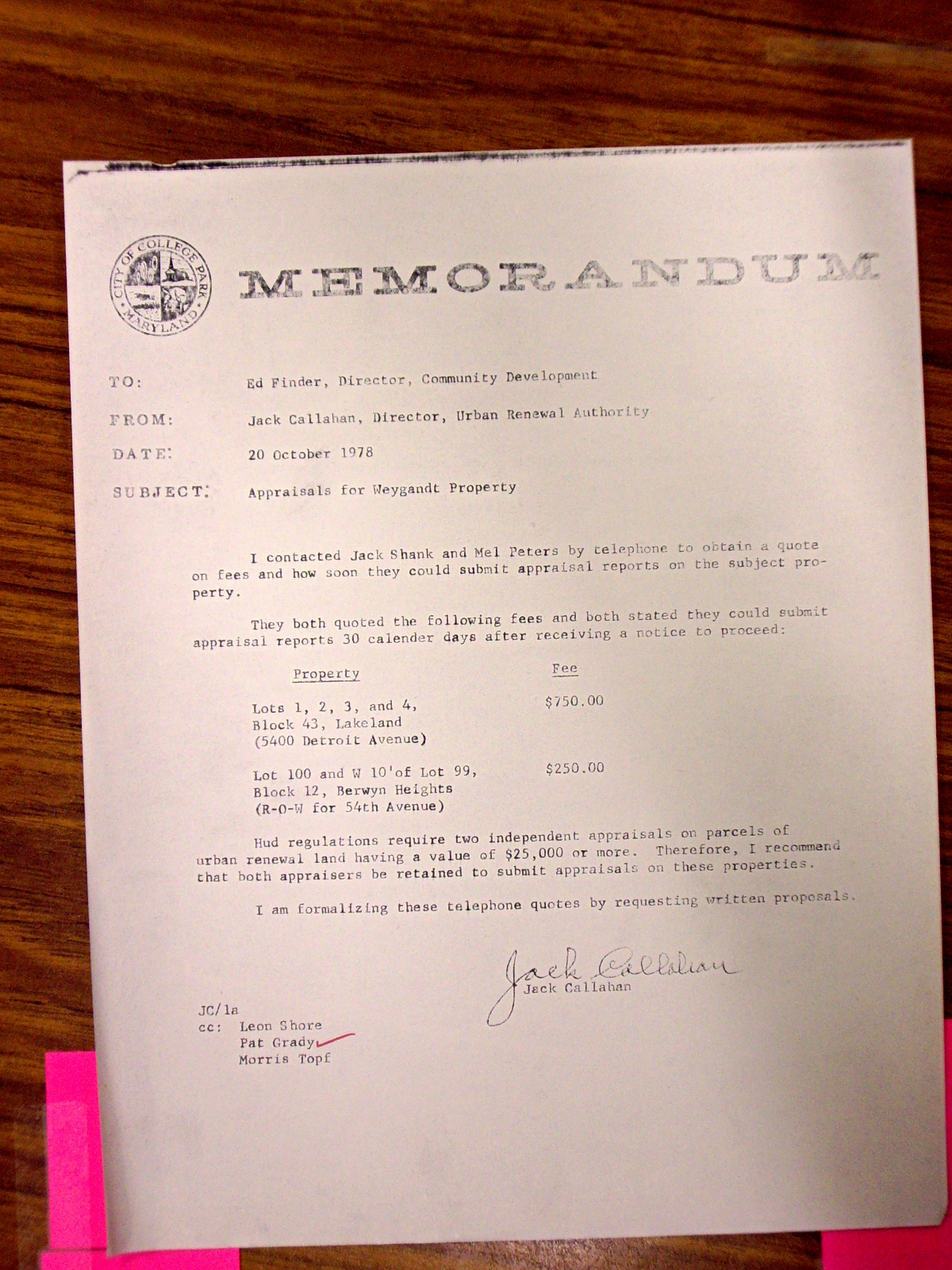
Jack Callahan to Ed Finder. Costs for appraisals for Weygandt properties

After purchase by Urban Renewal Authority

Property face was on Baltimore Avenue and included several small cottages and a larger building. A note on the photo from contributor states "Housing for B&O Railroad Employees"
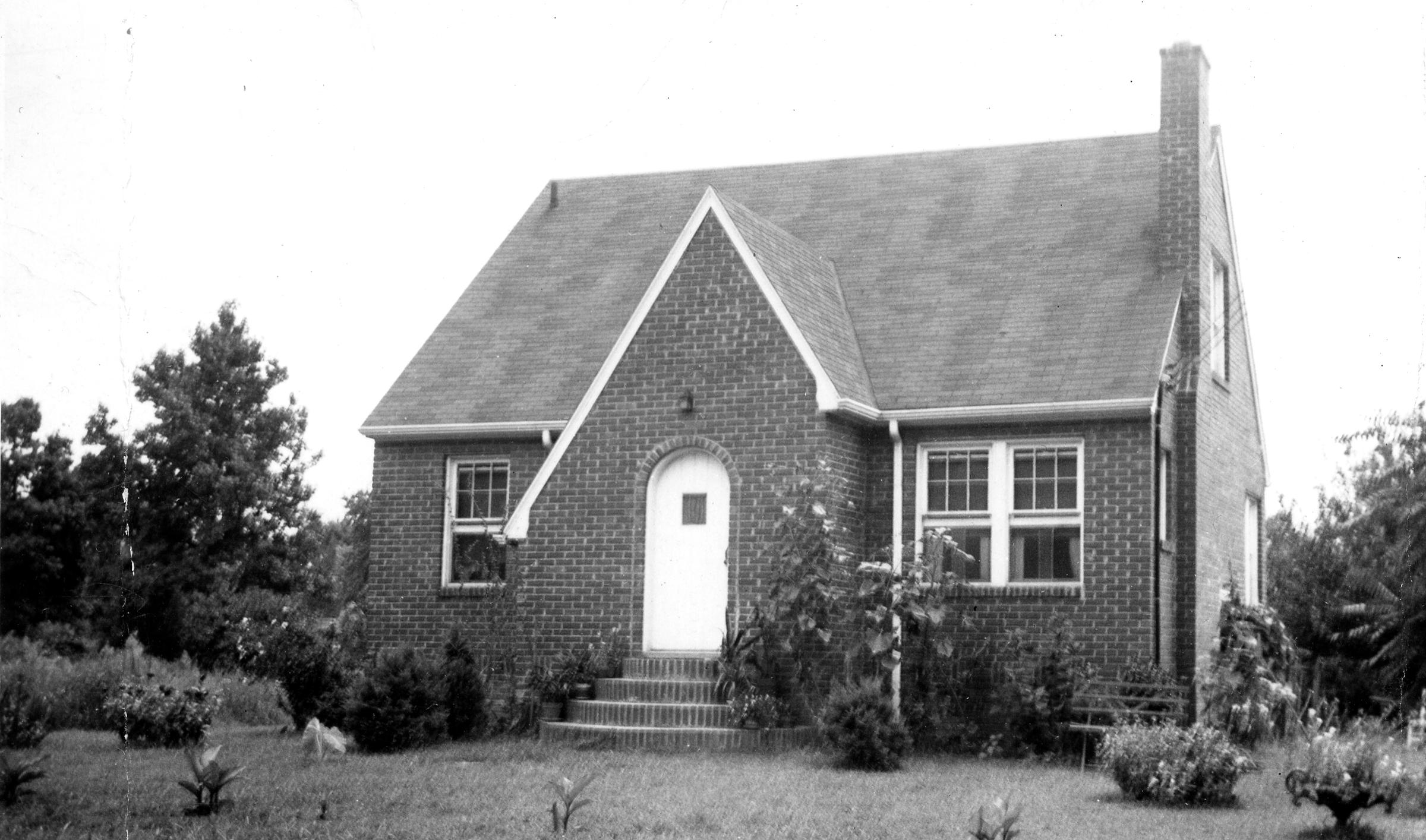
In 1935, Nancy Gross Tabbs built this house on Augusta Avenue (now Navahoe Street) for her daughter, Janine, and herself. Viola Gross, and Margret Gross Gray, Tabbs’ nieces, later inherited the home as it is pictured here in the 1950s. In 1989 a great-great niece of Tabbs purchased the home from her great-aunt’s estate.

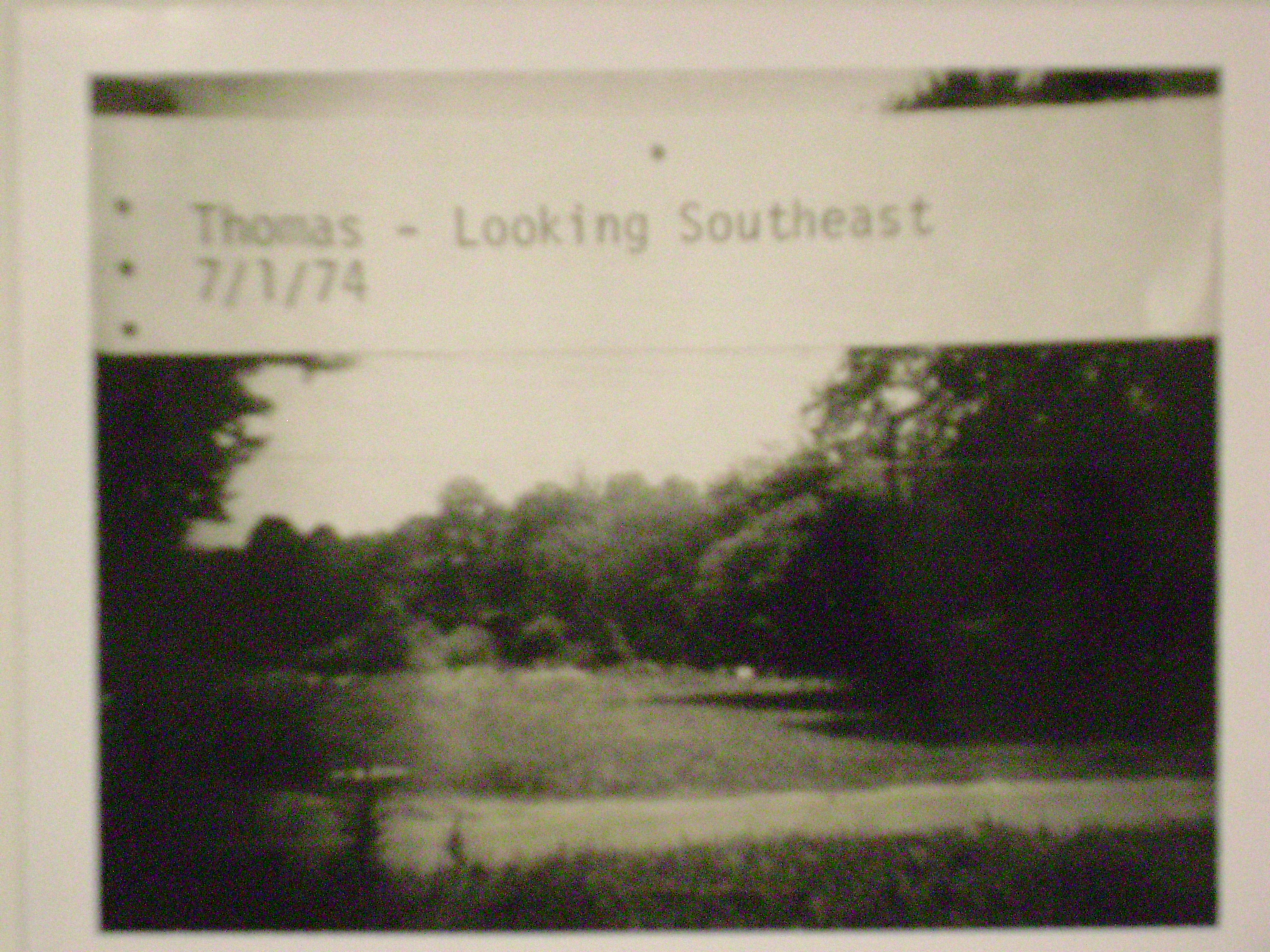
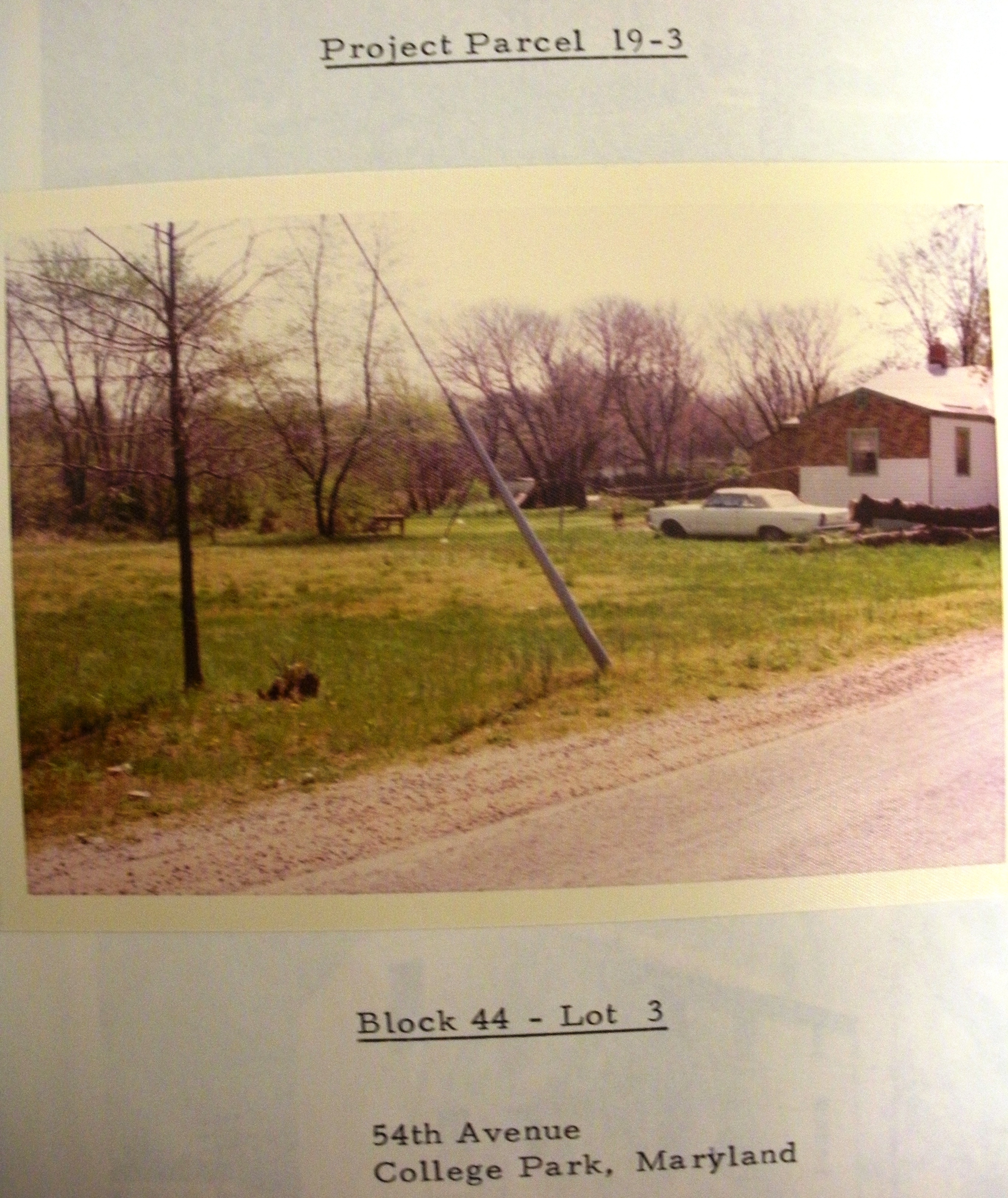
Block 44 Lot 3, Project Parcel 19-3
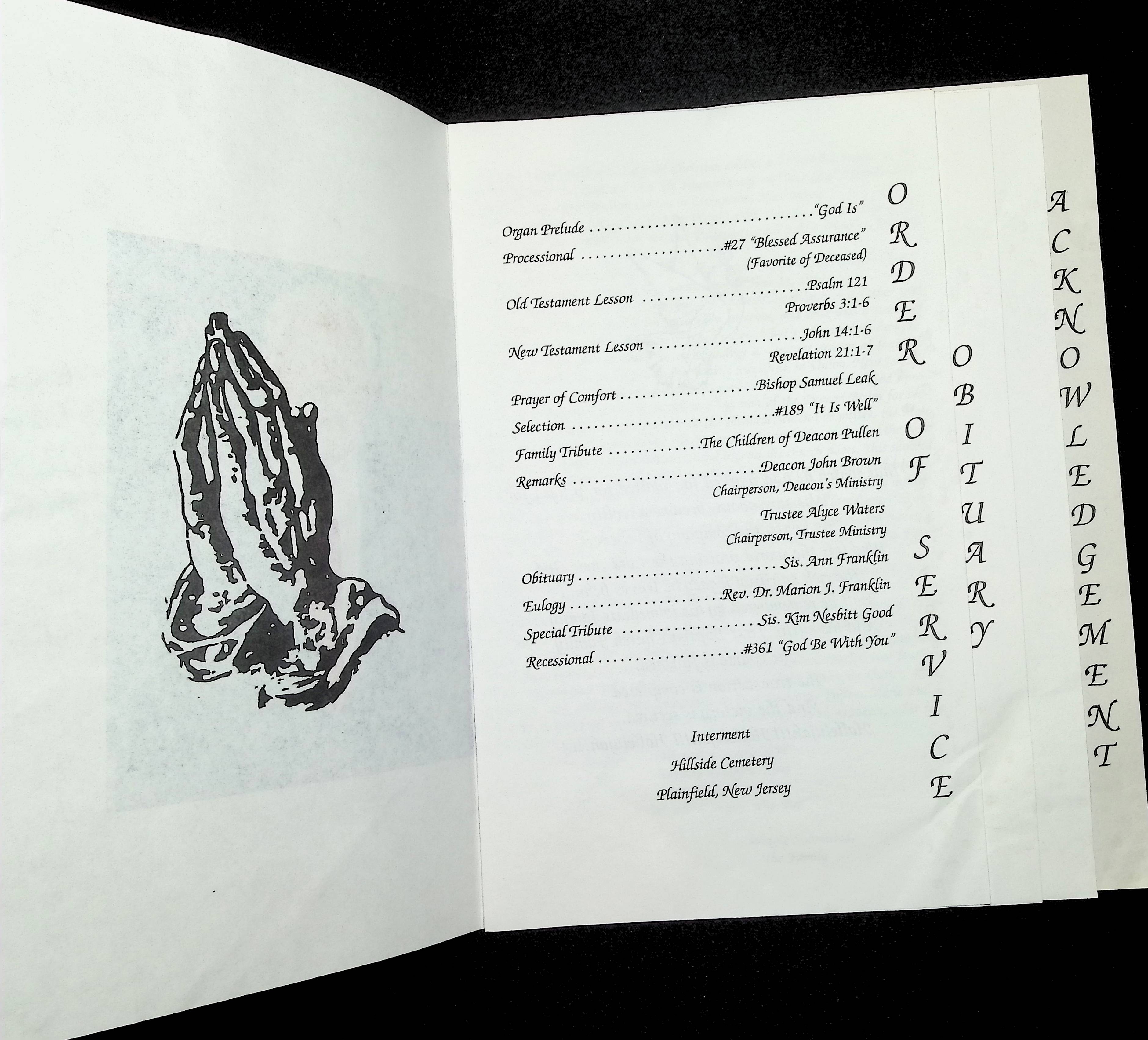
5400 Cleveland Ave. Block 45 Lot 6 Parcel 18-3 Paul & Delores Parker

8111 51st Street Page 1

Possibly 4827 Navahoe Street Mary E. Stewart, Samuel R., Earl & Raymond Conway

4808 Lakeland Rd Floyd & Azalian Ross Block 12 Lot 12. Project Parcel 24-7
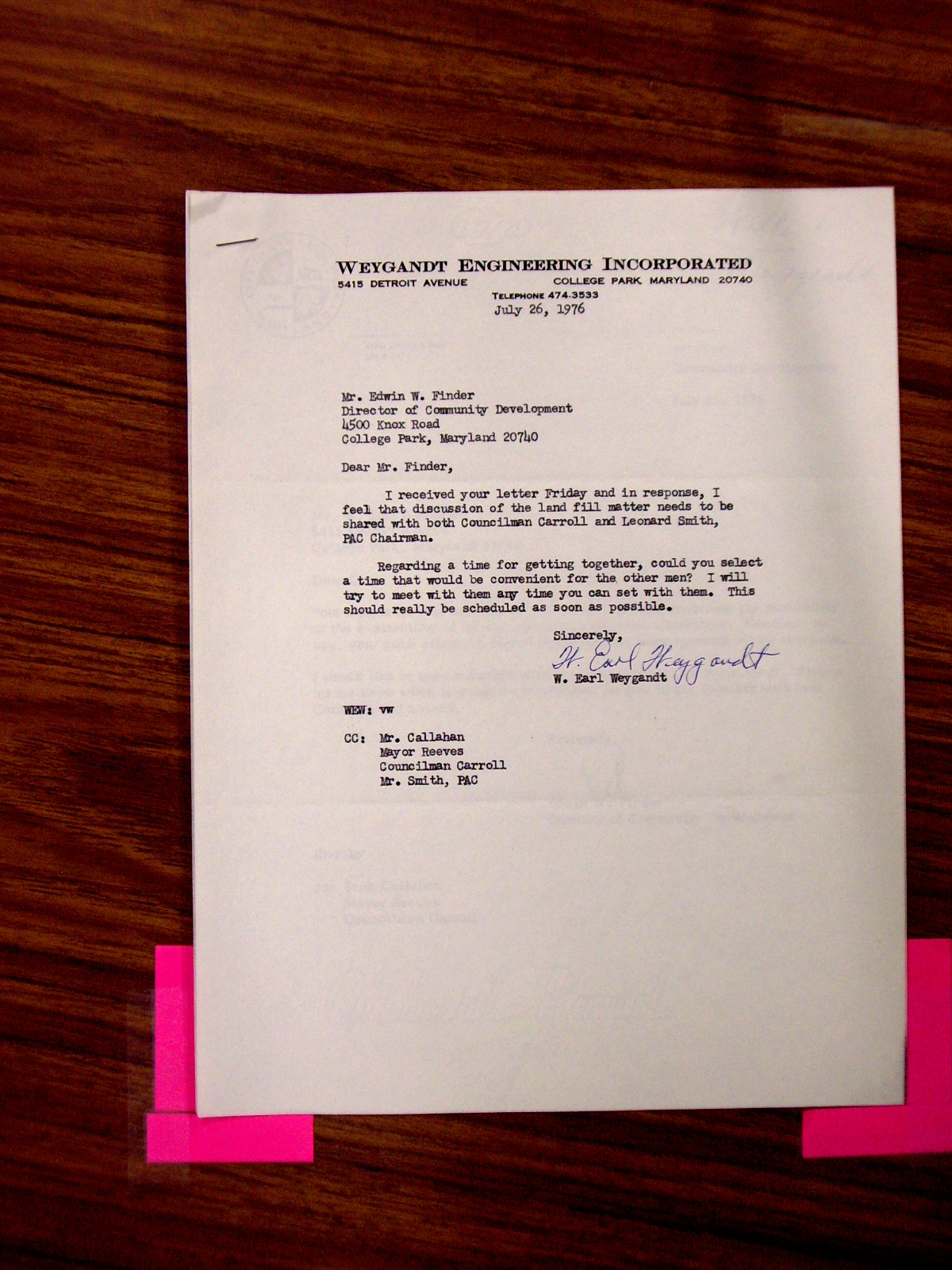
Expressing interest in discussing ideas about fill dirt, Response to request to discuss fill dirt asking that Councilmen Carroll and Leonard Smith be included in the meeting
Contains: - The cover page contains various icons representative of Lakeland, such as the streetcar trolley sign and the railroad crossing; - The schedule for the weekend, detailing the events for the community party on Saturday and the religious service on Sunday; - An introductory piece, explaining the mission of the weekend and the Lakeland Community Heritage Project; - An overview of Lakeland history. Noted image of a house is the "Hicks house;" - Brief descriptions of Lakeland's churches and Lakeland's clubs.; - A description of the families of Lakeland and how they were forced out of their homes by Urban Renewal. Contains a description of the history and impact of Lake Artemesia; - More descripition of the erasure of a large part of the community, then recognition of how it's come back stronger than before; - A family tree template; - The order of service for the religious service on the Sunday., Empty space for notes and resources with which one could find their family history. On the right side, a map of eastern Lakeland; - The final page of the pamphlet, with thank-yous and acknowledgements.
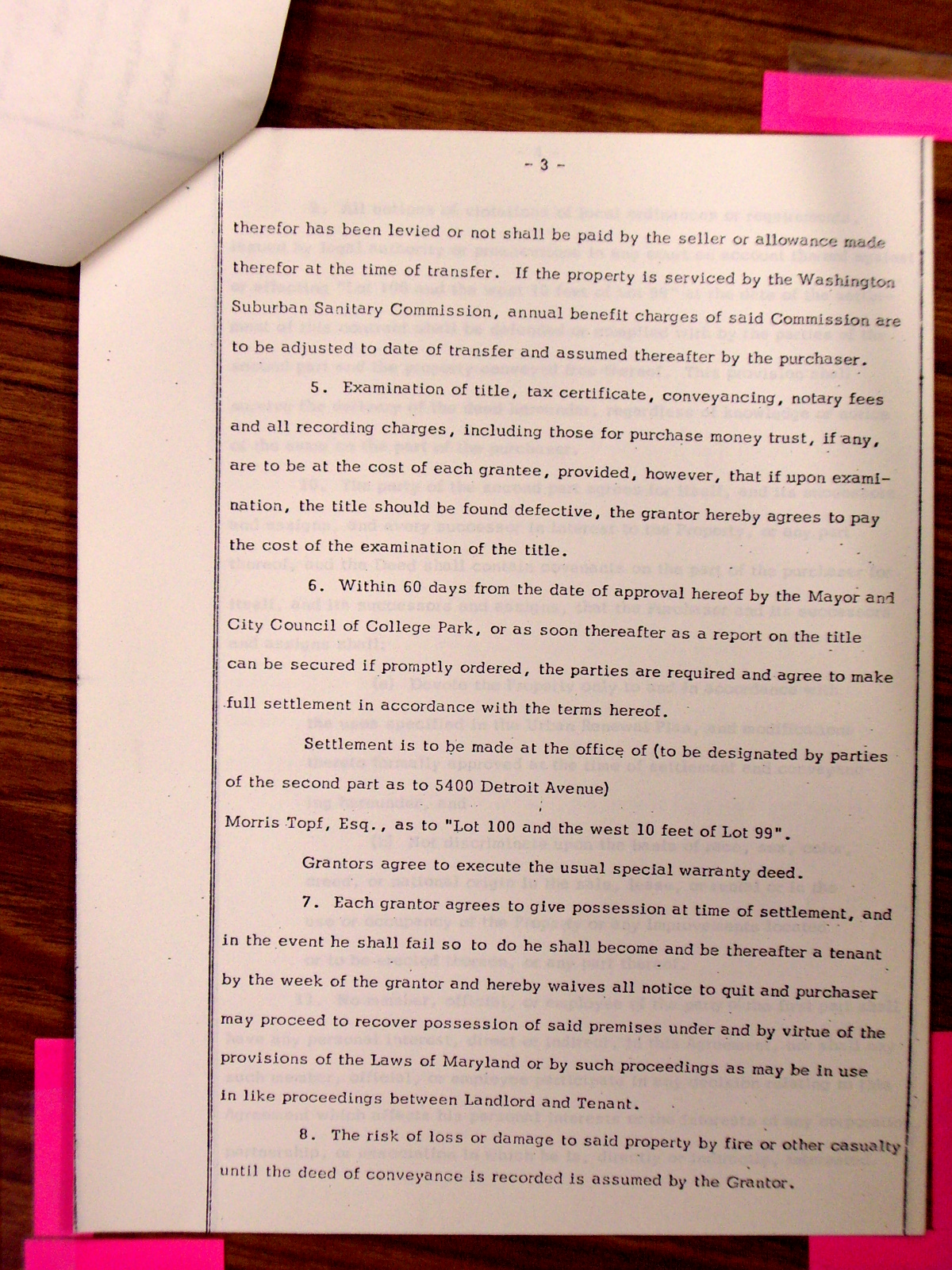
page 3
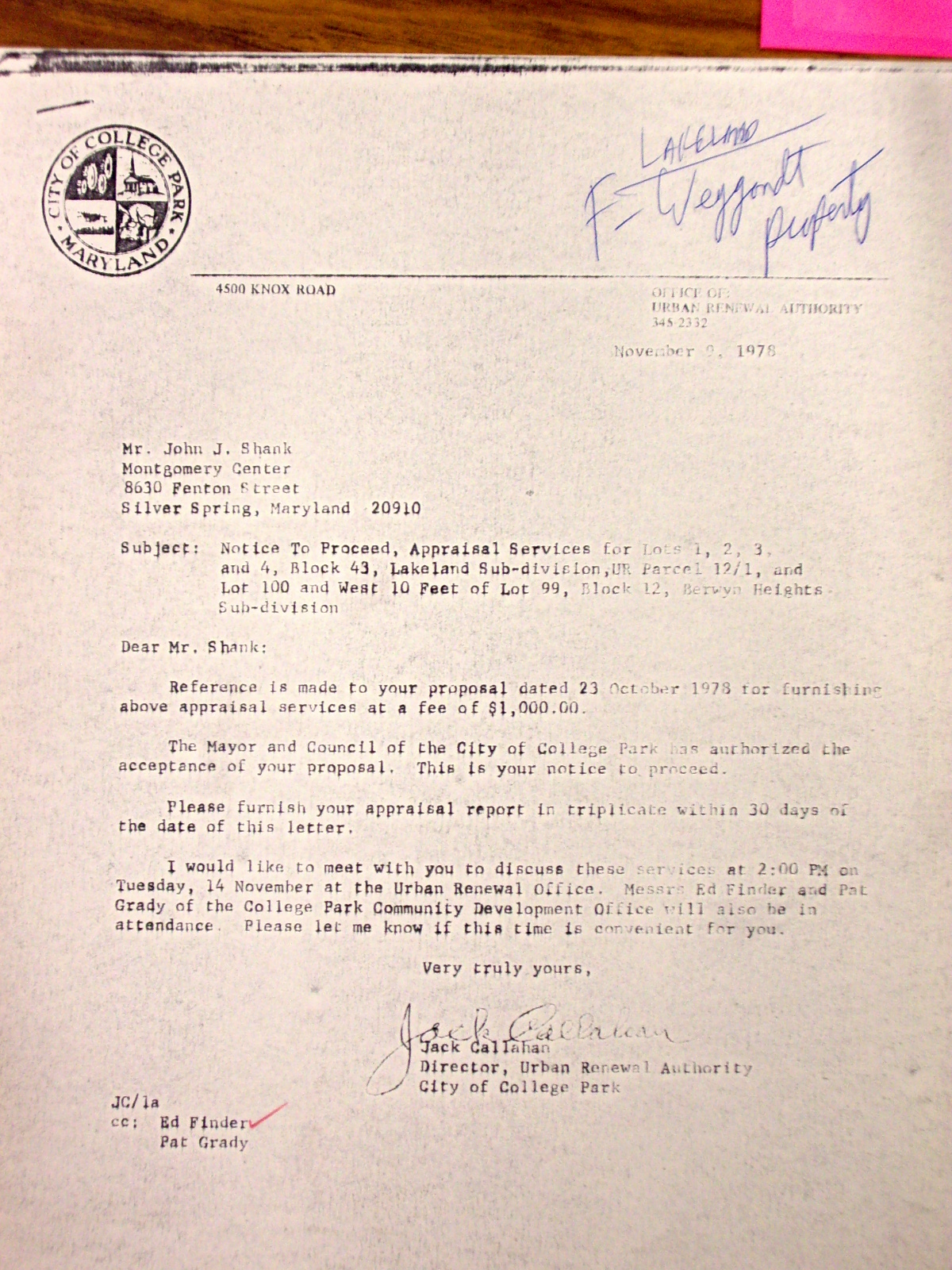
Requesting appraisal of Lots 1,2,3&4 and Lot 100 and West 10 feet of Lot 99, Block 12 Berwyn Heights
An oral history interview conducted with Julia Pitts during Lakeland Heritage Weekend 2008. Mrs. Pitts discusses her childhood in Beltsville, Maryland. How living in a predominantly white community affected her childhood, the relationships that existed in that community, and being educated in an all African-American, one room school house from first to seventh grade. Though she was born in Montgomery County, Maryland, where her parents met, they moved to Beltsville when she was young. She describes how her family lived on the "white" side of Beltsville, and how she walked to school on the other side of Beltsville, because the school in her community was only for white children. She discusses her relationships with white children in that community, how the community stuck together, and how she didn't feel the effects of segregation until later in life. She also discusses her different places of employment. After dropping out of school after seventh grade, to help her mother support the family after her father died, she worked as a nanny for people within her Beltsville community. She later got a job at the University of Maryland, through a contact in her community. She worked at the University on the housekeeping staff, a job she didn't keep for long, because she applied for a position with Prince George's County. She spent most of her life working for Prince George's county as a community aid. Mrs. Pitts explains segregation's effect on her life, on the lives of her two children, and on those who lived in the Lakeland Community. She discusses in detail a case of discrimination at a local bank, which prompted the NAACP involvement. She briefly explains how she felt about Urban Renewal in Lakeland, and how other people in the community felt about it. Her home was not affected by Urban Renewal but she understands how it effected others who lost their homes. A common theme throughout the interview was Mrs. Pitts' involvement in church groups and both the Baptist and Methodist churches in Lakeland. She is an active member of Church Women United, and mentions the organization several times throughout the interview.
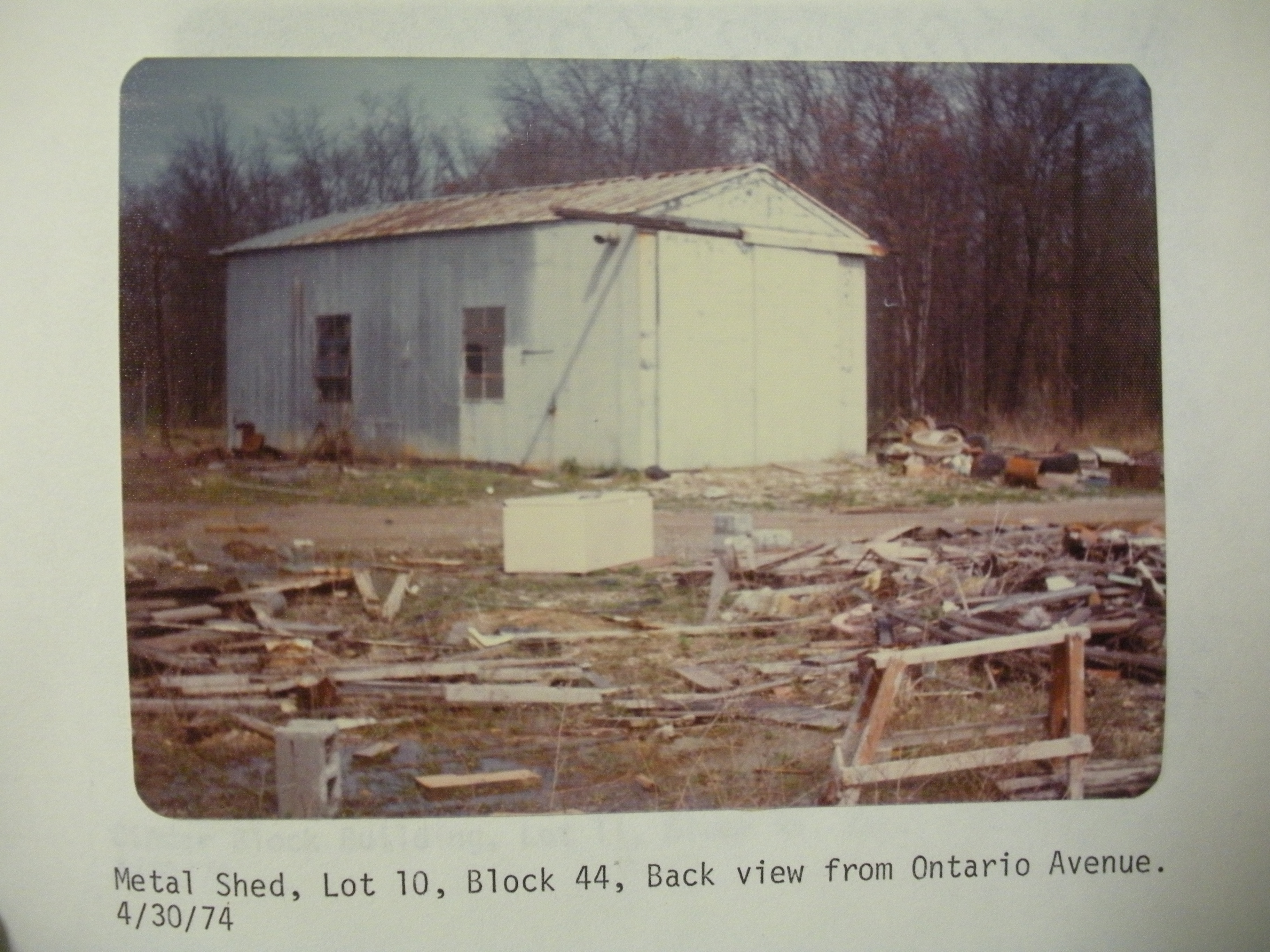
Lot 10 Block 44
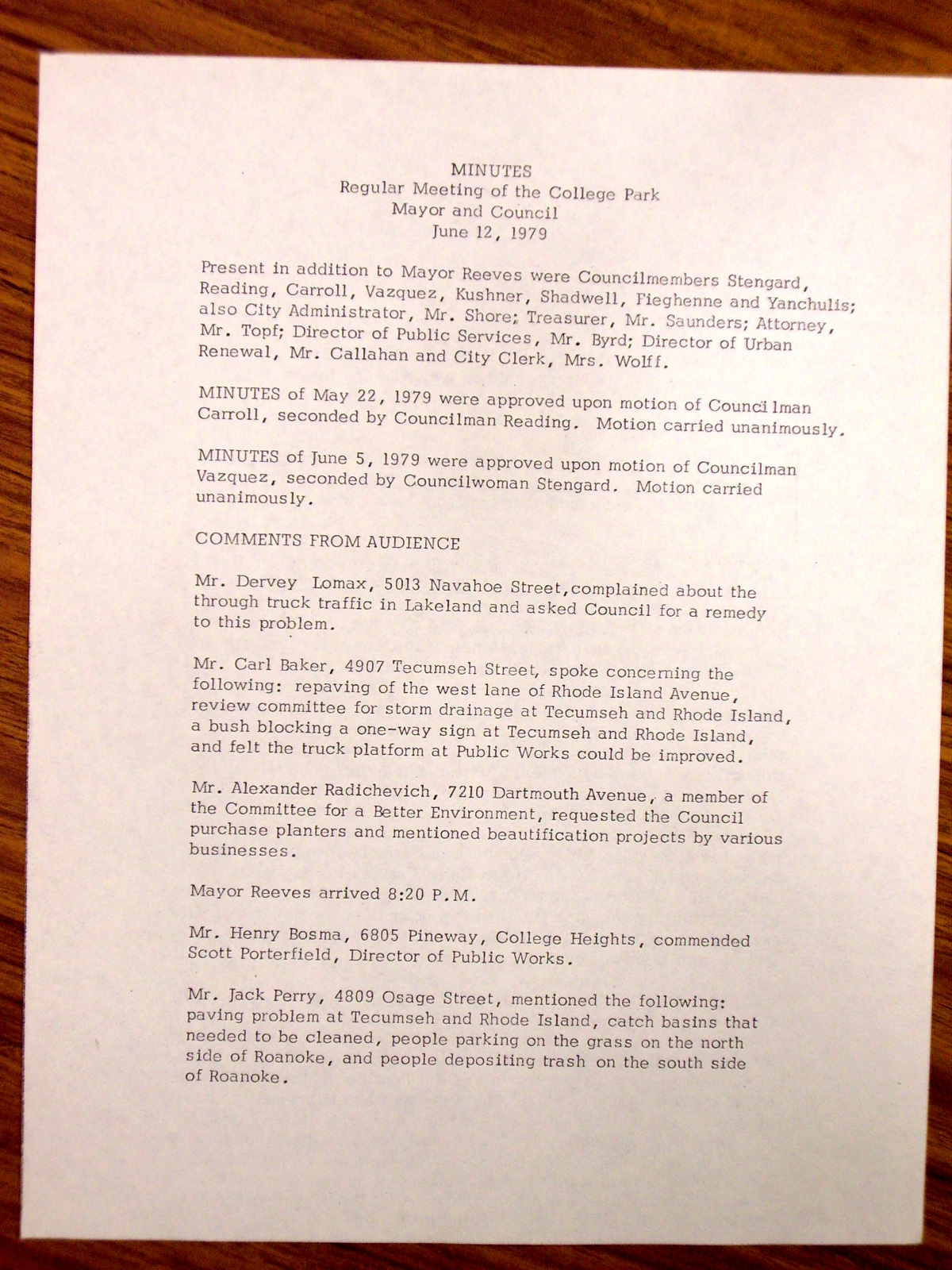
Reconsideration of sale of Weygandt property
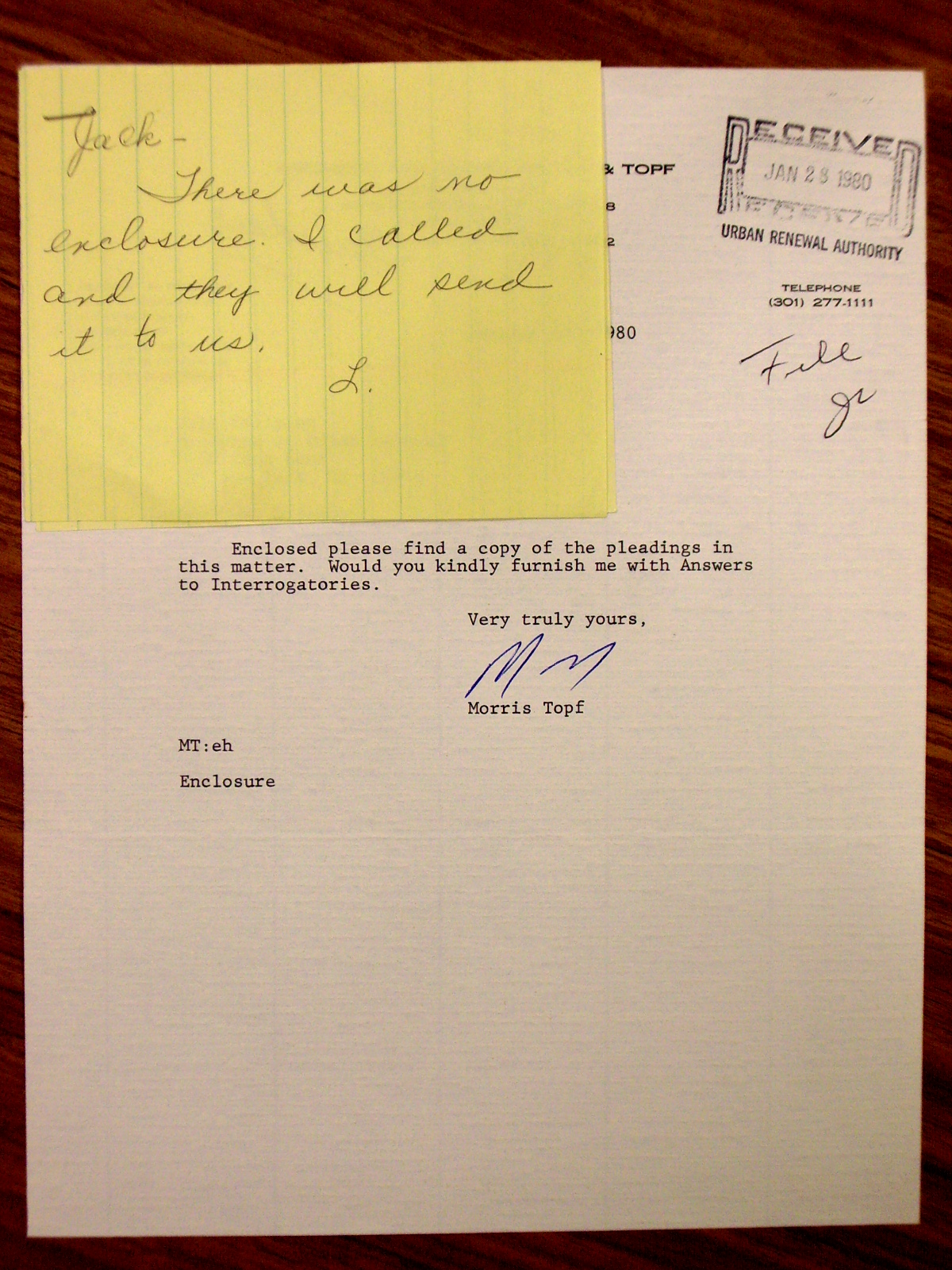
"There was no enclosure. I called and they will send it to us. L" Attached to letter from Morris Topf.

4702 Lakeland Rd Lot 10 Block 19, Urban Renewal Parcel 8 Block 23

Diamondback article

Located on the corner of Lakeland Road and 51st Avenue

4812 Lakeland-Sherman & Saxoline Campbell

Ground ready for new development
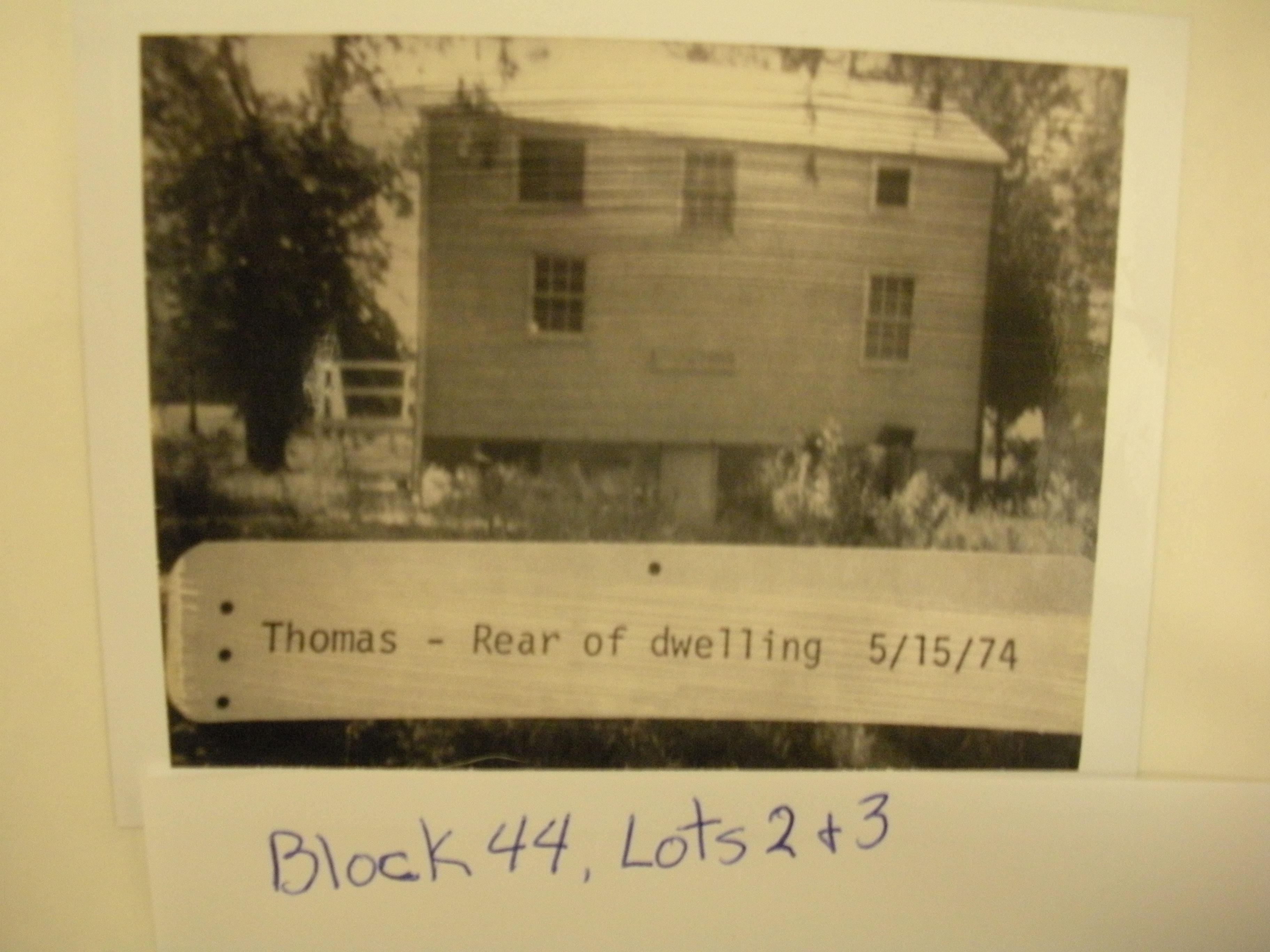
Block 44, Lots 2 & 3 8121 54th Ave Gilbert Thomas
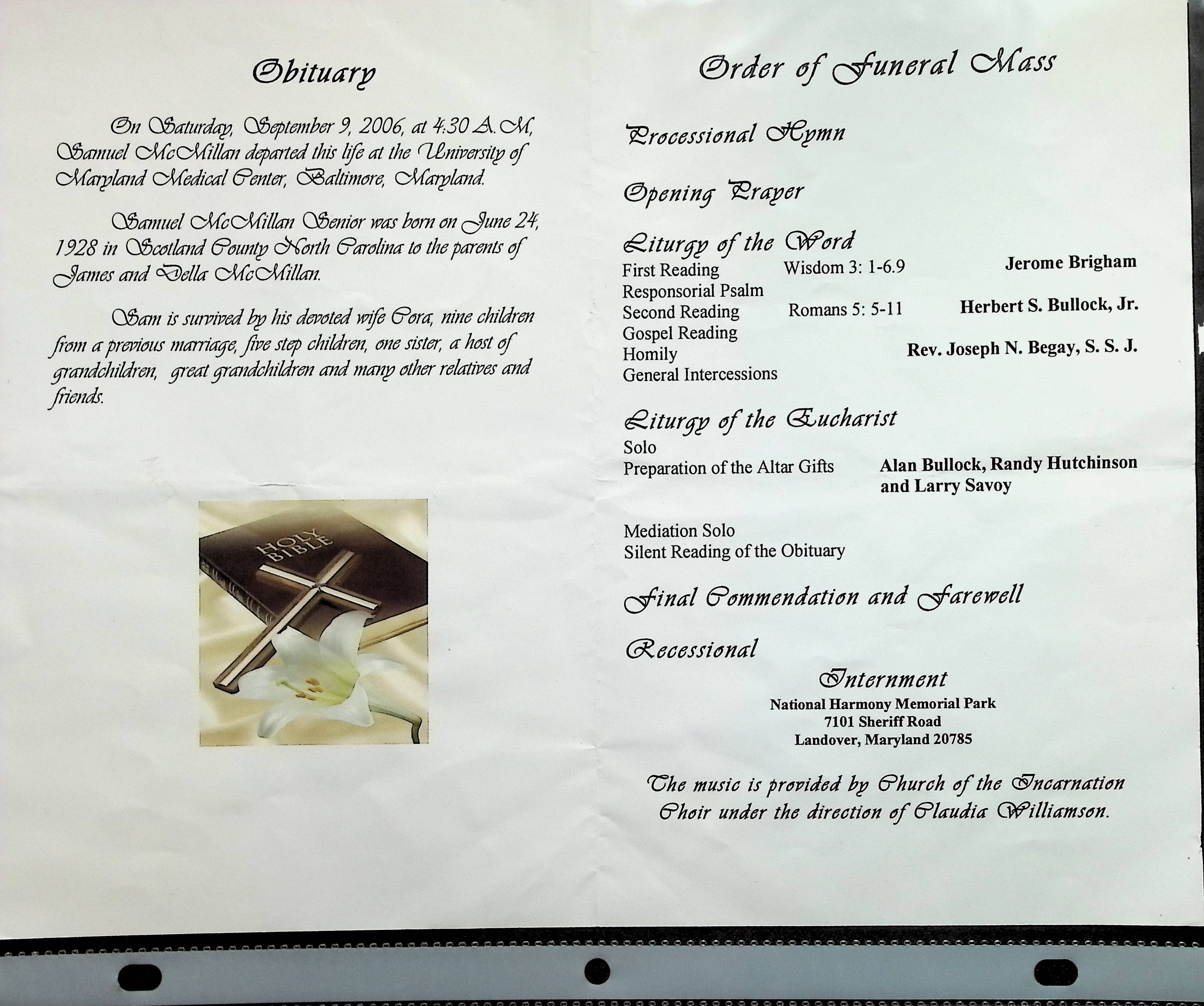
Project Parcel 19-8

In 1970, Prince George’s County officials reported that only a few of Lakeland’s streets were paved, lighting was inadequate, and home values lagged behind those of neighboring white communities. The report failed to mention contributing influences, such as the disparity in economic prospects and the lack of financing opportunities for residential and commercial properties. African Americans were primarily dependent on unregulated private lenders; bank mortgages were rarely granted. Here are two homes on Lakeland Road circa 1968.

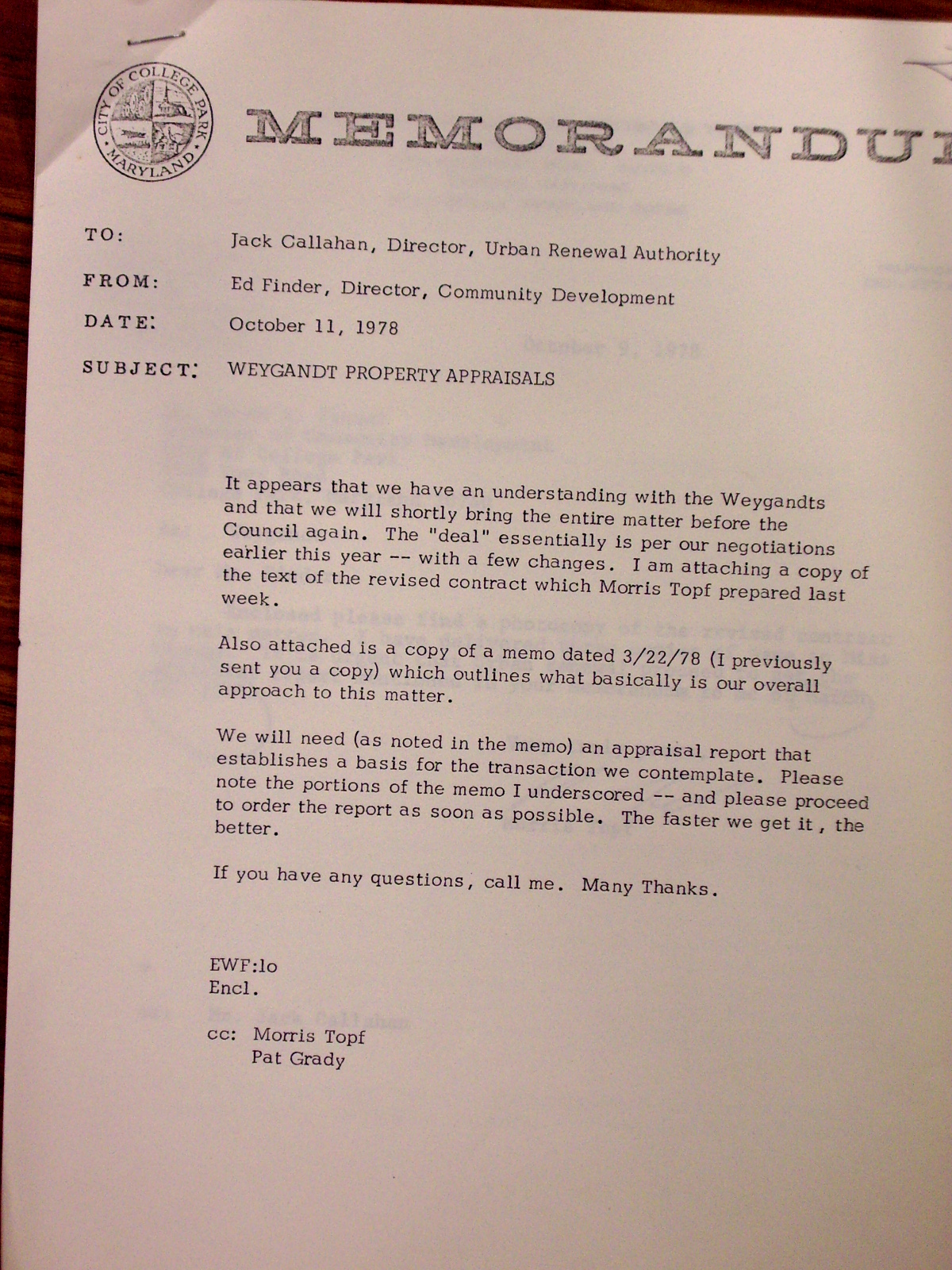
Subject Weygandt Property Appraisals
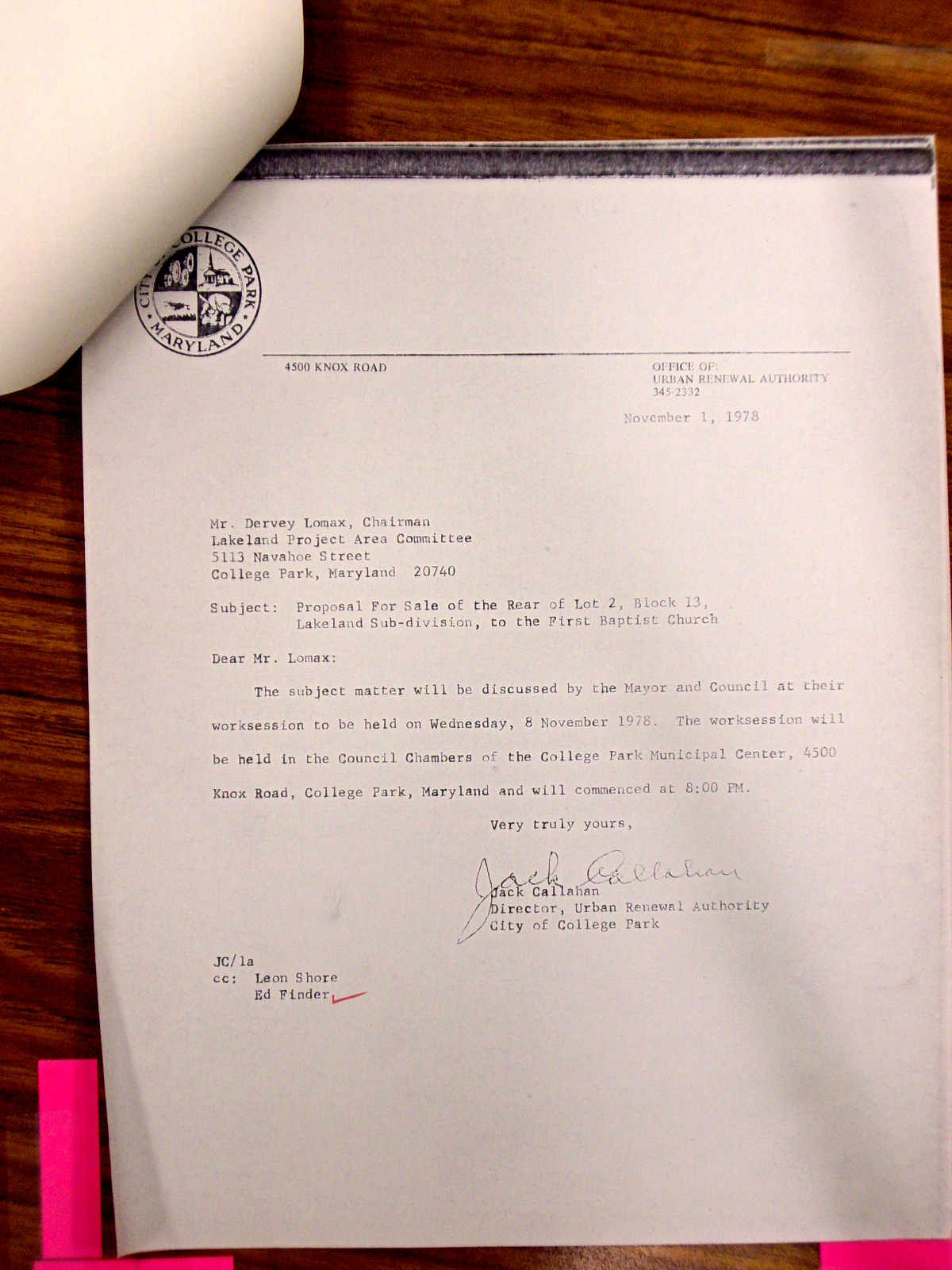
Advising city council will discuss proposal for sale of rear of Lot 2 Block 13 to First Baptist Church
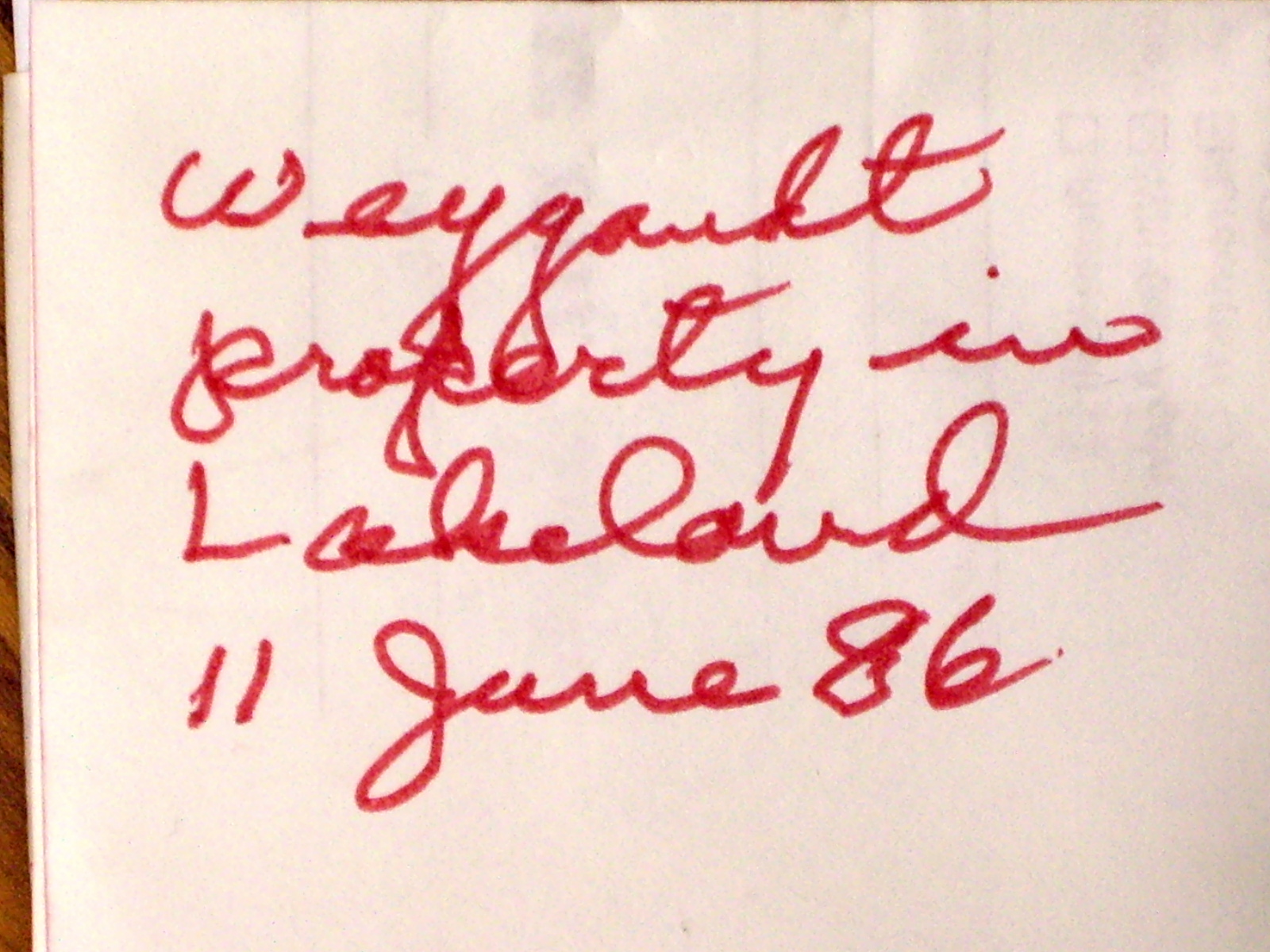
Weygandt property in Lakeland 11 June 86
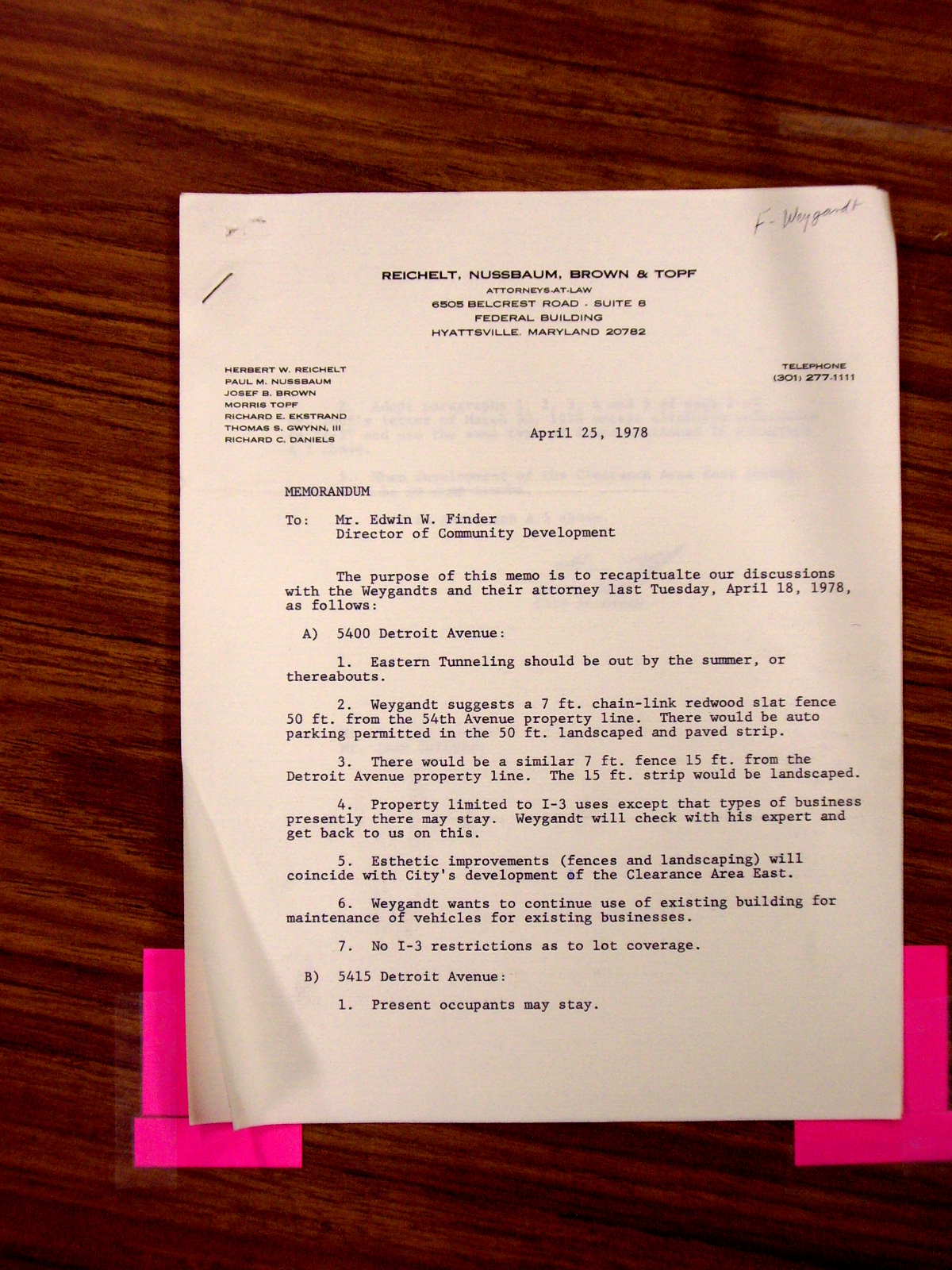
Recapitulation of discussion with Weygandts on 4/18/1978 over Detroit Avenue property
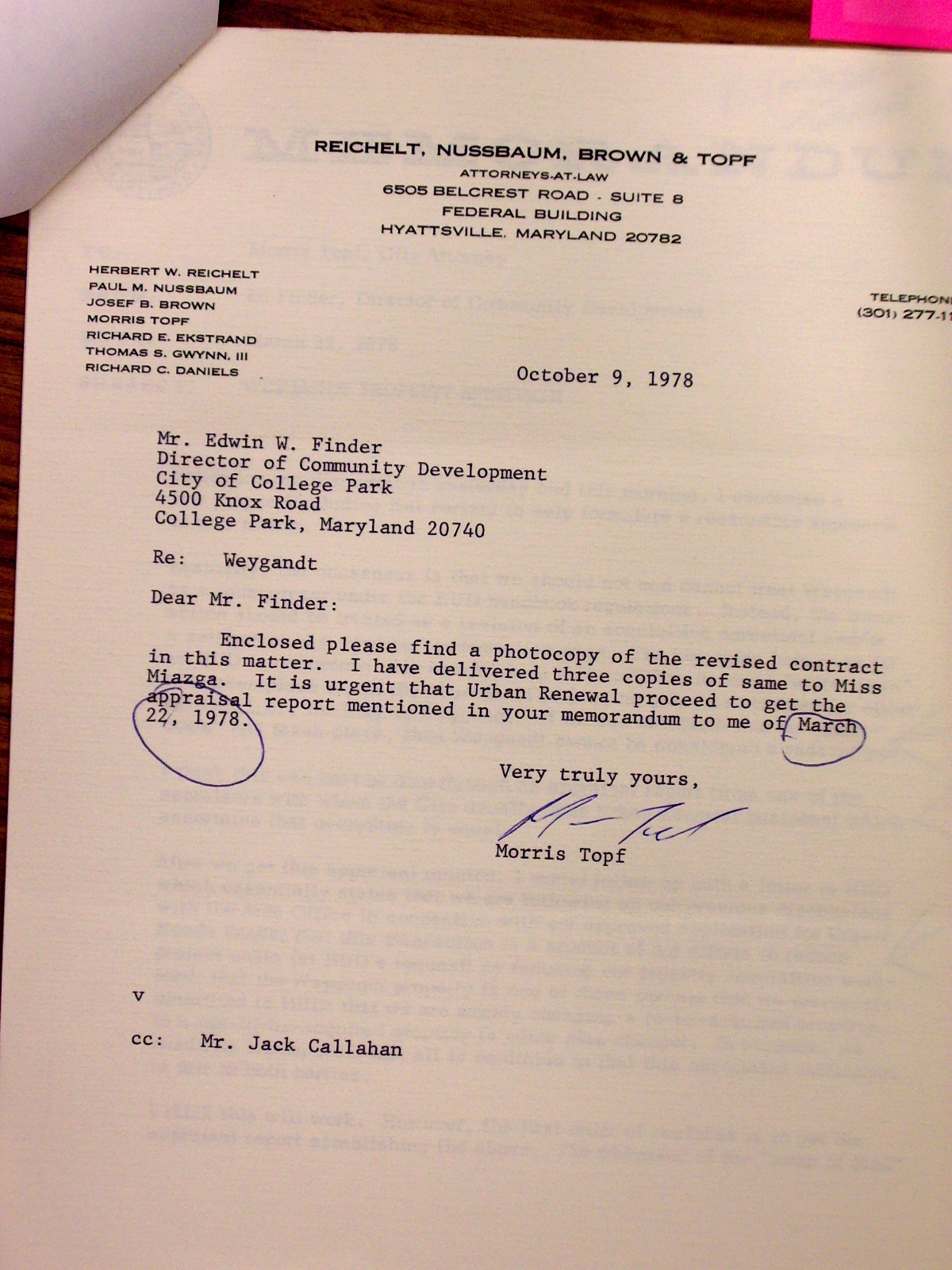
sending copy of Weygandt contract and requesting appraisal report
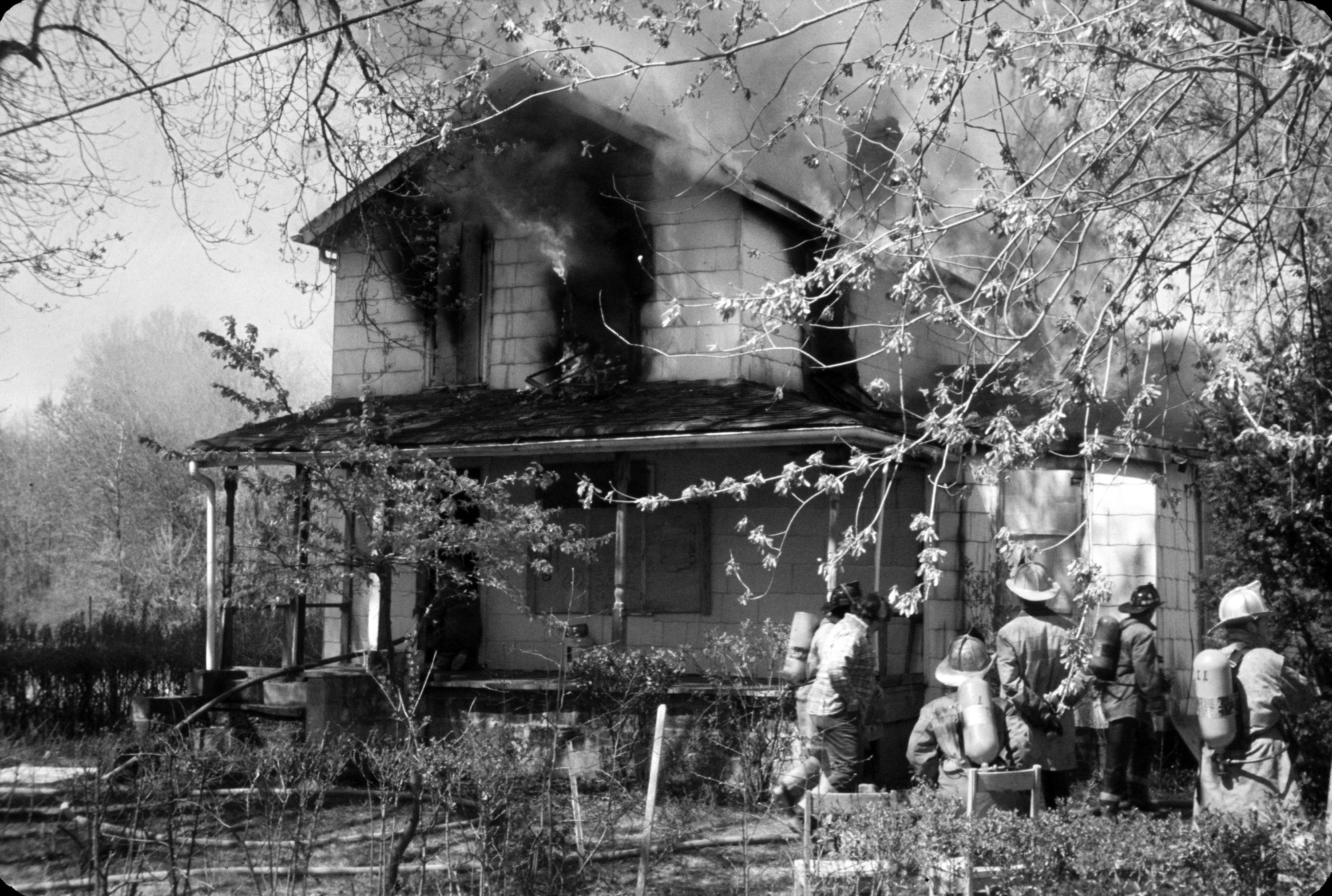
Once the City of College Park adopted the Urban Renewal plan in 1970, two thirds of the community's households--mostly in the eastern and western sections of Lakeland--had to vacate their houses. After families had moved out, several of Lakeland’s homes were burned as training exercises for the local fire department. Here is a photo of one such incident.
Description of Project (Objective, Preamble, Development Objectives)